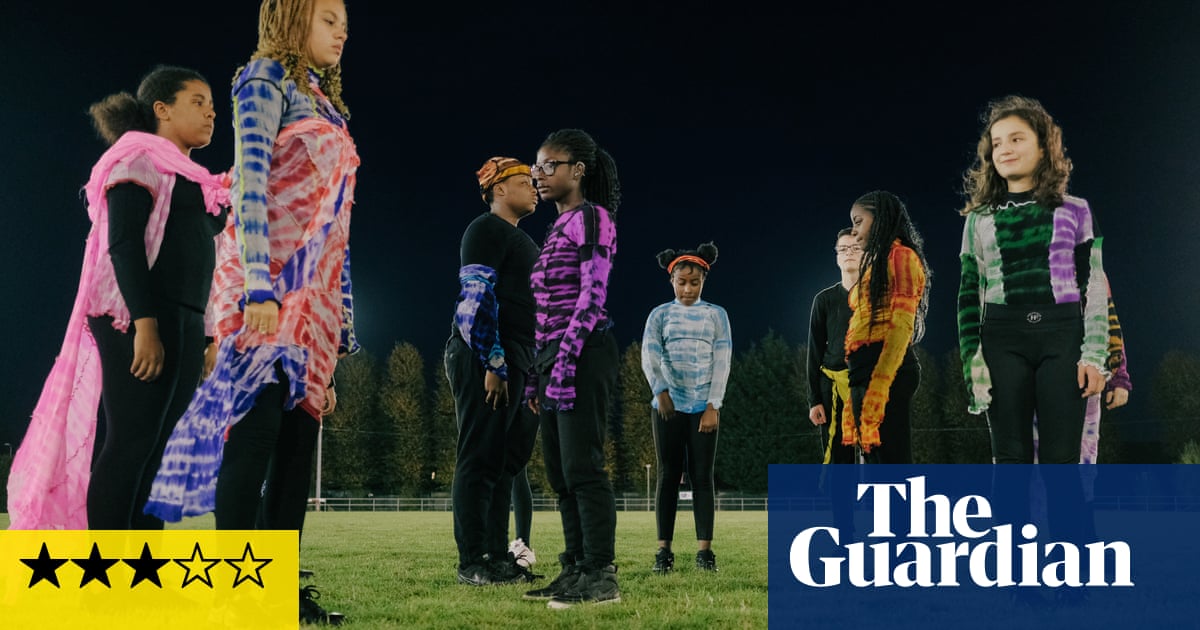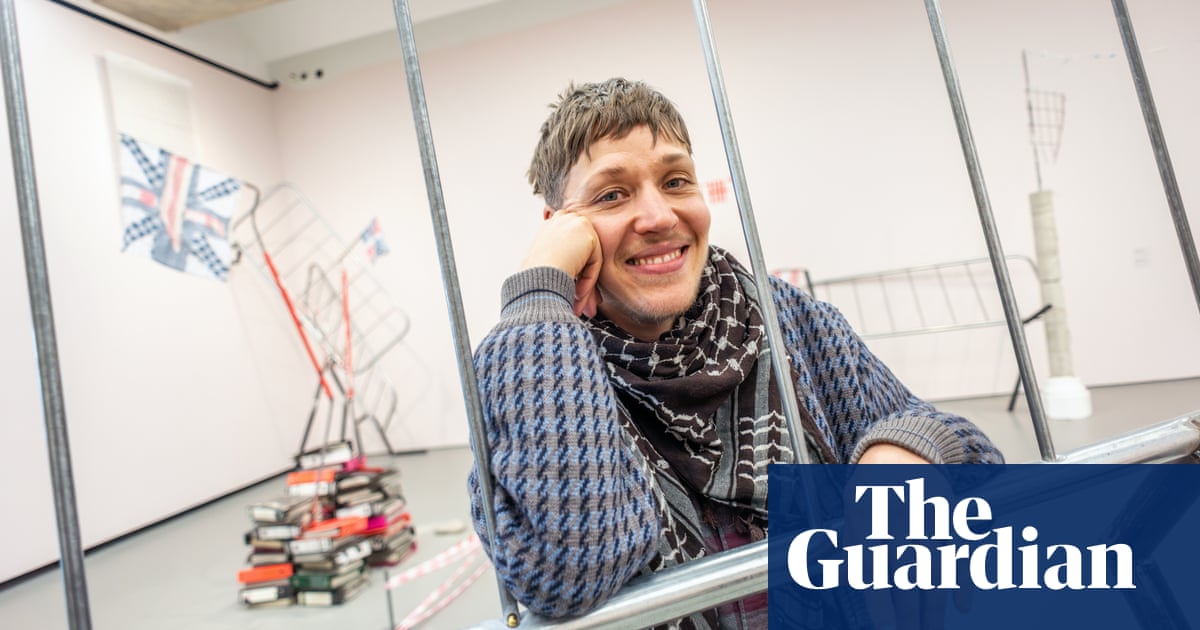
The winner of the Turner prize 2023 will be announced at the seaside on Tuesday 5 December. This is one of Tate’s colonising years, when it sends the prize out to benefit the provinces. Eastbourne follows Liverpool, Gateshead, Derry, Glasgow, Hull, Margate and Coventry in receiving the annual honour – or burden – of mounting the exhibition and footing the bill. Tate pays only for the prize itself.
The galleries have to take whatever the jury selects. This year, after sundry collectives, community art groups and the distribution of the money to 10 different beneficiaries during Covid, the shortlist has reverted to an old-fashioned quartet of artists. Each has one of the Towner’s generous and light-filled spaces, and the combined show is generally more affecting, skilful and sincere than in recent years. Alas, half of it tends to the winsome or pious.
I daresay that Ghislaine Leung (b.1980) could use the prize to buy more studio time. Her exact hours are given in a minimalist wall chart: 9 to 4 two days a week away from childcare. So she gives instructions to museums to do her work for her: shift a massive steel ventilation duct from one gallery to another, then reinstall; make a fountain that will drown out any ambient noise.
The ducts are connected to nothing, the fountain’s gushing isn’t loud enough. And the collection of toys borrowed from Reading library – tiny washing machines, vacuum cleaners and houses, geddit – is far too obvious a message. No intellectual work is required to appreciate this critique of the means of art-world production, and indeed very little appears to have gone into it in the first place.
On the first floor Rory Pilgrim (b.1988) is showing his film of a seven-song oratorio staged in various ways – spoken, sung, narrated, choreographed, performed by an orchestra – on what the idea of a raft meant to socially deprived and vulnerable people in Barking and Dagenham during the pandemic.
The haunting music and lyrics are written by Pilgrim himself, also seen playing the harp in the orchestra; the score is superbly matched to the rhythms of kids dancing by night in local parks. A man sits on a bench talking about suffering and poverty. Others explain about art or gardening as their comfort. The soloist singing the lyrics at a special performance at Cadogan Hall in London is unforgettably poignant.
Alongside paintings by local artists who speak in the film, displayed on the gallery walls, are a number of Pilgrim’s own – small-scale and wilfully cack-handed, whimsies worked in nail polish, glitter and oil. The ultimate value of everything here to everyone involved, in terms of their mental health, is of course never in doubt. But perhaps that is the measure of the whole enterprise. Pilgrim collaborated throughout with Green Shoes Arts, which aims to deliver wellbeing through creativity to the borough’s community. All these people are surely at least as deserving of merit as the artist.
On the top floor of the Towner are Barbara Walker’s cogent and pensive charcoal portraits of victims of the Windrush scandal made directly on the walls. These are colossal. You have to look up to them, these vast souls who were so appallingly treated by the Home Office, denied their lawful immigration status through a vicious chain of policies and deliberate procedures. Walker’s response is to make the humanity of those affected monumentally visible.
But there is a slight flatness to these images, since Walker was obviously not drawing from life. More moving are the recent works on paper, also part of her Burden of Proof series. Here, Walker (b.1964) superimposes her portraits of these appallingly treated people over exact facsimiles of the documents that were submitted as evidence of their right to remain. Bodies, in both respects, become living testimony.
Here is the headteacher of Gospel Oak primary school writing the most heart-rending reference for the gentle Mr Braithwaite, loved by all the children, who has worked there for 16 years. His image exactly accords with the teacher’s words of praise. Here is the Royal Artillery gunner, ever upright in his portrait, even as the Home Office tries to throw him away. The discharge papers describe his career as exemplary.
Conceptually poetic, visually nuanced – the strain in each face, the crease and fade of these much-handled documents – is perfectly balanced against the devastating directness of Walker’s works.
And a profound link is made, here, by the curatorial decision to run an open corridor between Walker’s show and Jesse Darling’s (b.1981) in the next gallery. Darling’s antic games with the systems of the British state are worked out as exhilaratingly gleeful sculptures.
Barbed wire, frilly curtains, anti-pigeon spikes, union jacks, barriers: you know exactly where you are with this art. Darling makes flags out of rusty rebar, a jaunty maypole out of police tape, a UK bureaucracy out of lever-arch files gorged up with concrete that can never be opened, let alone read.
Sad jubilee bunting, recycled from Eastbourne promenade, crisscrosses the gallery above a conga of prancing barriers, drunkenly skewed, cocking a bulldog leg or climbing the walls in fear. A lot of great drawing underpins this satirical sculpture. And Darling, also a poet, is coruscatingly epigrammatic.
The walls sprout verbal-visual conceits: a grandfather fashioned out of antique golf clubs and crutches, a self-important candle leaning at a priapic angle (“Bigwick”). The same barriers that speak of our right to protest also invoke police kettling and overcrowded stadiums. Come on England is one of Darling’s sardonic titles.
Eastbourne, once known as God’s waiting room, is all vitality. An art bus zips around the Sussex landscape, dropping in on Charleston and its new Lewes outpost, as well as the Towner. Artworks by Helen Cammock, Nathan Coley and Michael Rakowtiz are dotted around town. The Turner prize show has doubled the Towner’s seasonal figures and the visitor response board is the warmest I have ever seen.
I don’t believe anyone cares who wins any more. The artists successfully derailed the system themselves in 2019 by refusing to accept the prize except as a single body; and the days of betting and media outrage are mercifully long gone. What strikes at the Towner gallery is how intelligently, and even-handedly, all four artists are presented. If it has to be one artist – for his inventiveness and originality, let it be Darling.
Turner prize 2023 is at Towner Eastbourne until 14 April 2024












